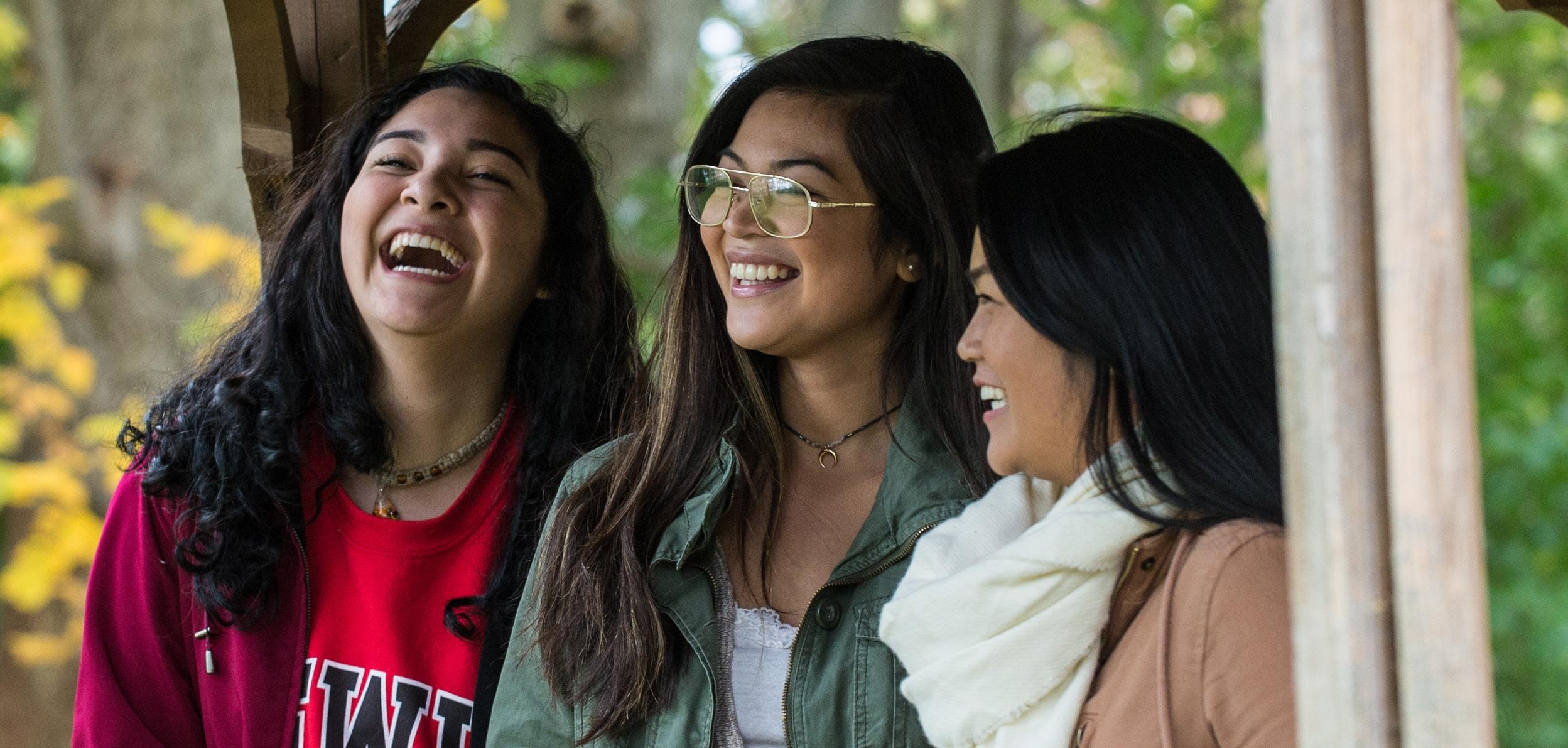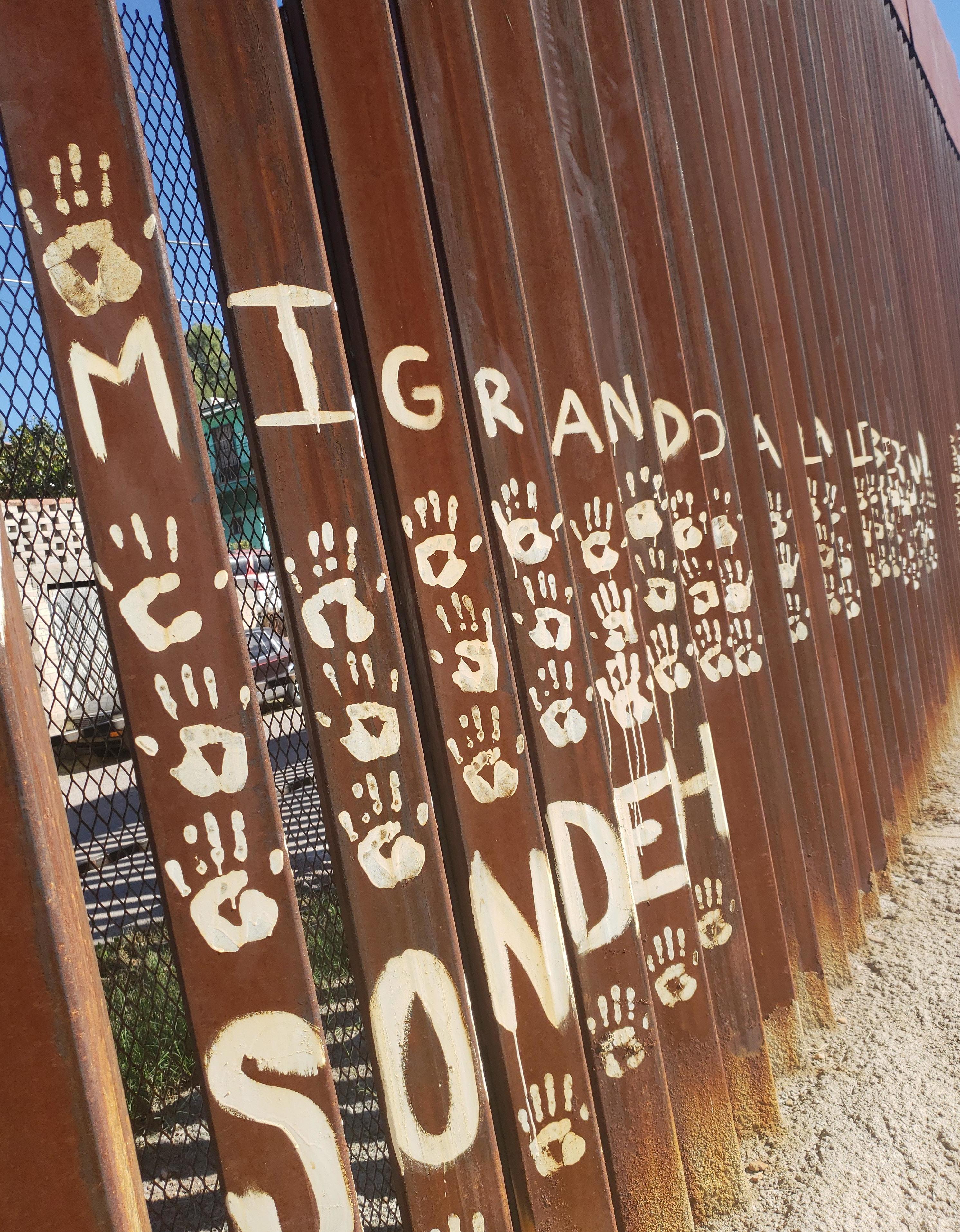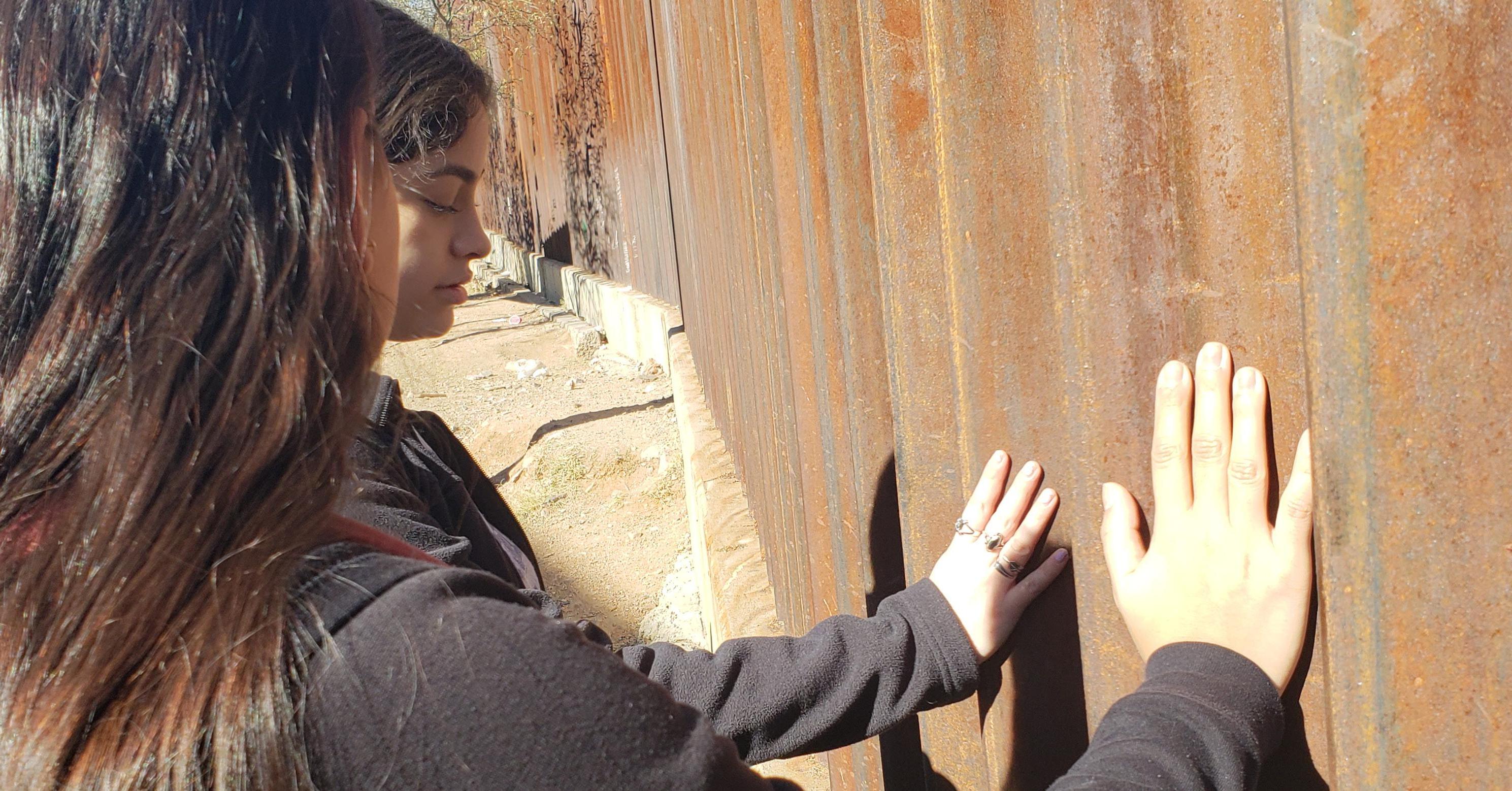
9 minute read
Brother James Miller: Before Becoming Blessed
BY ALEX VASILIADES
On December 7, 2019, Brother James “Santiago” Miller, FSC, will become the first De La Salle Christian Brother from the United States to be beatified. Brother James was only 37 when he was shot and killed as he patched a school wall in Huehuetenango, Guatemala, in 1982.
Advertisement
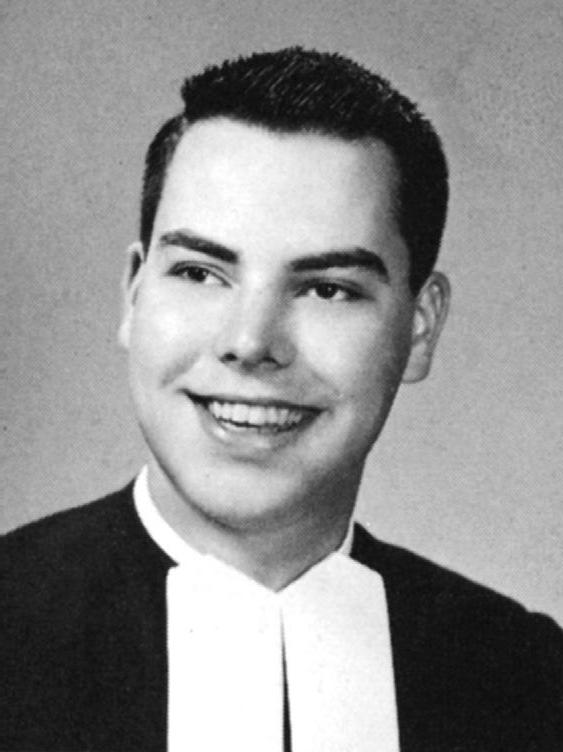
Brother James Miller, FSC, pictured in a yearbook photo, graduated from Saint Mary’s University of Minnesota in 1966.
Courtesy Saint Mary’s University of Minnesota
A native of Stevens Point, Wisconsin, Brother James felt called to serve beyond the borders of the comforts and safety of his home country. He is survived by his two brothers, Bill and Ralph, his two sisters, Louise Shafranski and Patti Richter, and numerous Christian Brothers.
His cause of beatification was undertaken by the Diocese of Huehuetenango and received the Decree of Validity in Rome in 2010 when Brother James was designated a Servant of God and a martyr for the faith. The recognition of martyrdom cleared the way for his beatification. As a martyr, Brother James must have one miracle attributed to him posthumously to reach the next and final step toward sainthood, which is canonization.
Much of Brother James’ life story has been shared in various books and articles, including a recently updated biography, Hermano Santiago: The Life and Times of Brother James Miller, FSC. In the following interviews, we learn more about Brother James from two individuals who knew him well, his sister Louise, and friend and colleague Brother Stephen Markham, FSC. In addition to sharing memories of Brother James, they also tell us what life has been like for them since that tragic day.
How do you think Brother James' upbringing led to his role in the Brothers?
Brother Stephen: I think Brother James’ experience growing up in a rural area on a farm with a wholesome Catholic family prepared him well to know how to appreciate the simple things of life, to learn how to create and fix things, and above all to embrace his faith, caring for and looking out for neighbors, friends and anyone in need. This prepared him to take on roles with the Brothers that led him to Nicaragua and Guatemala, where he lived and died for what he believed.
This is mentioned in Brother James' biography: “‘One of two frightening things could possibly happen to me in Guatemala,’ Brother James had said. ‘I could be kidnapped, tortured, and killed, or I could simply be gunned down.’ He told his sister that his only real fear in this regard was that it might be the first.” Do you remember this? Was there ever a point that you asked him not to go back to Guatemala?
Louise: Yes, I do remember it well, as I am the sister he told that to. I remember, asking him, “Why would they do that to you? What would they hope to gain? What possible information would they hope to get?” His answer was “nothing,” but it would be a sign of power. As for telling Jim not to go back, no, I did not. I knew Jim was very dedicated and committed to his students in Huehuetenango, there was no stopping him from going back.

Brother James served at Casa Indígena De La Salle in Huehuetenango, which is where he was killed.
Do you remember where you where when you found out he had been killed? What went through your mind? How were you told?
Louise: I was at my apartment with my husband, Rich. It was the evening of February 13, 1982. My mother called to ask if Rich and I could come out to the farm now. I asked her if it was in regards to my father, who was ill and on dialysis at the time. My mother assured me that it was not my father, but wouldn’t say any more than that. She had the strangest sound to her voice, and it was a sound I had never heard before or since. I knew something was very wrong.
As I hung up the phone, there was a special bulletin on the television. It stated that there had been a priest shot and killed in Guatemala. I turned to Rich and said, “It’s not a priest. It’s Jim. He has been shot and killed.” Upon reaching the farm, we noticed several vehicles in the yard, one with a Pacelli bumper sticker. Seeing that, I knew without a doubt that Jim was dead. When entering the house, I saw Brother Dominic Ehrmantraut, FSC, who was the principal at Pacelli during that time. I looked directly at him and said, “It’s Jim, isn’t it? He’s dead. They shot him.” It was then that his death was confirmed.
All I could think of at the time was what a waste of human life, and how devastating this was for my parents and my other brothers and sister. I was also angry. I still cannot understand how people can commit actions like this against fellow mankind.
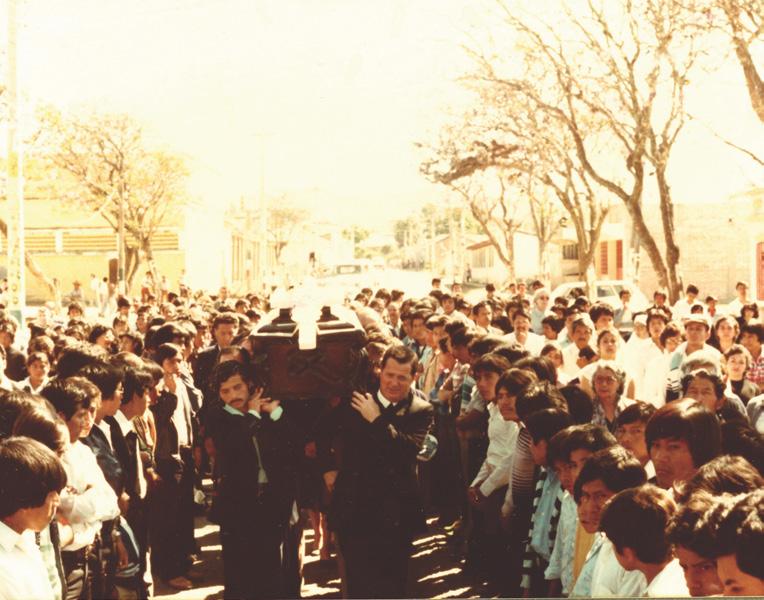
The casket of Brother James was carried through various streets of Guatemala.
What has the process from his death to beatification been like for you?
Brother Stephen: It has been moving and somewhat emotional, intriguing and educational, graced and filled with gratitude. I have been asked to give several talks and, of course, many memories from the time of his death (both stressful happenings and affirming confirmations for Jim and the Brothers) resurfaced. I spent time in Rome and visited with Brother Rodolfo Meoli, FSC, Postulator General, participated in an eight-mile pilgrimage in Wisconsin with our Lasallian Volunteers, and served as a witness at the exhumation of Brother James’ body in Ellis, Wisconsin. I learned a lot about the canonization process and was grateful to reunite with Brother James’ siblings.
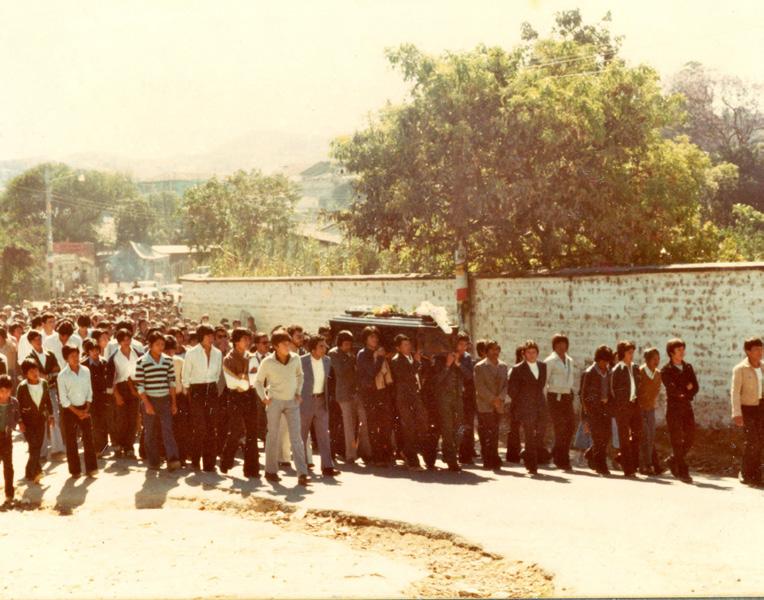
The casket of Brother James was carried through various streets of Guatemala.
Louise: Oh, where does one start. From the very beginning it was thought that Jim would someday become a saint. In the years following Jim’s death there were annual memorial/award programs in his honor. Being present at those programs at times was very difficult, as it continued to resurface the events of that tragic time. As time moved on it got better for me, and I was able to accept the honors and acknowledgements that were bestowed on Jim.

The casket of Brother James was carried through various streets of Guatemala.
Since the actual process has begun, there has been a lot of waiting and wondering. We, as a family, were asked to assemble in October 2009 at St. Peter’s Catholic Church in Stevens Point. It was at that time that depositions and recollections of Jim were to be recorded for the official record. We, the siblings, were taken according to age in a separate room, away from the rest of the family. We swore an oath to tell the truth. We were each asked 42 questions and were to give our responses to the best of our knowledge. That process was quite thought-provoking and intense, as it was witnessed by officials from Rome and the Diocese of La Crosse.
Since that time, the family has met with Brother Larry Schatz regarding the process and things that might be addressed, including, but not limited to, the exhumation of Jim’s physical body and his eventual and final resting place after the beatification ceremony.
To say it has been a unique experience would be an understatement. This is truly a first for our family, and not to mention for the Christian Brothers of the United States. It has been incredible to be part of history, and to think this is all regarding my brother makes it more unbelievable.
What is your hope for the future? What do you hope for his legacy?
Louise: My hope for the future is that Jim would be canonized and that my siblings and I will be living to see—hopefully be part of—the celebration. As far as his legacy, I would hope that Jim’s death and subsequent beatification will bring to attention the poor, underserved and underprivileged in Central America. With that attention, I would hope that more people will open their hearts, minds and resources to create opportunities to allow the people to be more self-sufficient. It would also be gratifying if more people were interested in following his example. As it is known, sometimes ordinary people can do extraordinary things.
Brother Stephen: Brother James was passionate about serving the poor, using his God-given talents to make life better for the poor in Nicaragua and Guatemala, and he is an example of our Founder’s message, “Your zeal must go so far that you are ready to give your life, so dear to you are the children entrusted to you.” It is my hope we Brothers and all those with a devotion to Brother James will embrace whatever is their passion and will live it out in practice as was the case with Brother James.

A restored photo of Brother James, taken during his time in the novitiate.
Is there anything that you would want our readers to know about Brother James?
Brother Stephen: Brother James lived an authentic life, died a martyr and, rightly so, is recognized by the Catholic Church. We must remember that there are other missionaries—religious, ordained and laity—who have done the same, some of whom have been publicly remembered and many who are simply remembered in the hearts of those who knew and loved them.
Louise: The one thing I hope people take away is that Jim was a real person. He was a son, brother, Christian Brother and friend. He had a hearty laugh, a ready smile, a quick wit, a good sense of humor, and was a genuine, hard-working person. He was a man who felt happiness and sorrow, had great love for both family and the Church. He loved working with his hands, and was, through and through, a little farm boy at heart.
Alex Vasiliades is the communications manager for the Midwest District. The responses in this story have been lightly edited for length and clarity. All photos in this story were submitted by the Midwest District unless otherwise noted. Learn more about Brother James at www.cbmidwest.org.


